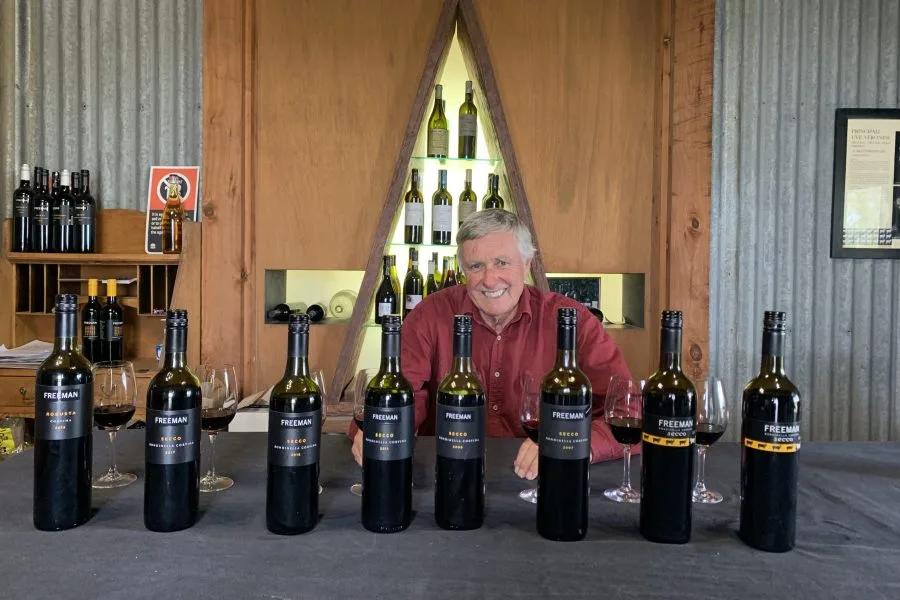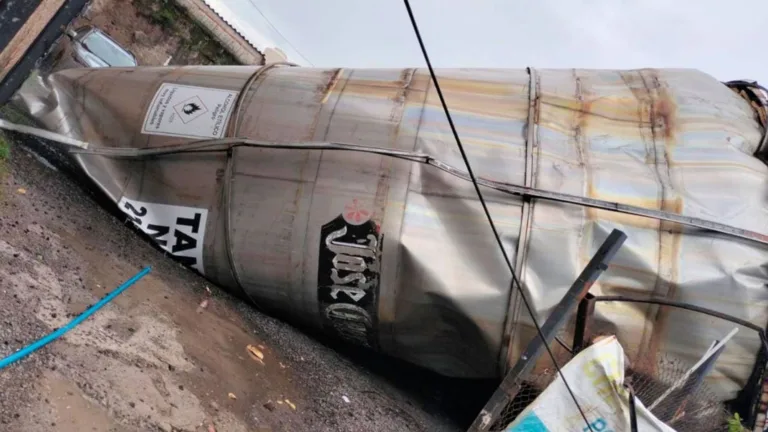Brian Freeman with his Secco lineup. Huon Hooke
Brian Freeman stands on the dam bank at the bottom of his Back Boundary vineyard and surveys the lush green carpet of vines stretching out before him to the top of the distant hill. Fifty-five hectares of this 70-hectare block was burnt by the late spring frost in October, he says.
“We won’t harvest a single berry from it this year. The irony is that it was all pinot grigio, and the 15 hectares that wasn’t frosted is mostly shiraz—which we can’t sell!”
He whips out his phone and shows me a photograph he took of that same scene just after the frost. The 55 ha of frosted vines are brown and shrivelled, as though a wildfire has ripped through them.
Freeman is most famous for his Secco red wine made from partially air-dried grapes of the rare (in Australia) corvina and rondinella.
Brian Freeman owns several vineyards in the Hilltops region at Prunevale near Young, totalling 200 ha, which is about one-third of the entire region’s vines. He makes wine under his own Freeman Vineyards label and sells most of the grapes to other wineries—in the Hunter Valley, Canberra District, Orange and other places.
Pinot grigio is one of Freeman’s most in-demand grapes. Prosecco is another. These two are also very profitable because they’re very productive. Many tonnes to the hectare, compared to, say, red grapes for full-bodied red wines, which must be cropped much lower.
But Mother Nature hadn’t finished
This Article was originally published on The Real Review







